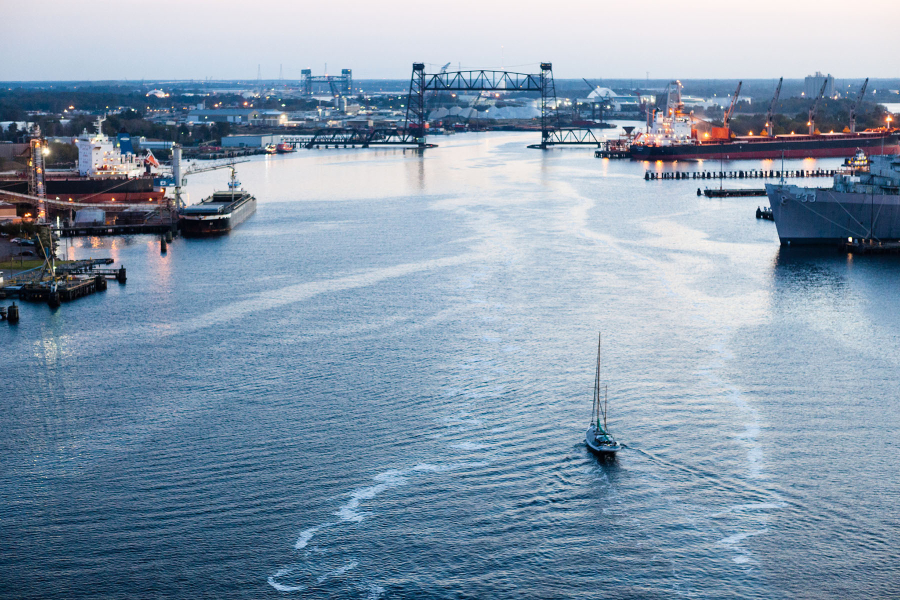Chemical contaminants pose invisible threat
Metals, pharmaceuticals and more pose risk to health of humans, wildlife

Industry lines the Elizabeth River, looking south from the South Norfolk Jordan Bridge in Portsmouth, Virginia. As the site of ports, shipyards and industrial processing facilities—both past and present—the Elizabeth River has faced significant pollution challenges.
One of the most highly polluted waterbodies in both the Bay region and the entire East Coast, the Elizabeth River has been identified by the U.S. Environmental Protection Agency as one of three “regions of concern” in the Bay watershed for chemical contaminants, alongside Baltimore Harbor and the Anacostia River. These chemical contaminants can range from pesticides to pharmaceuticals, metals and more, and can harm the health of both humans and wildlife.
Almost three-quarters of the Chesapeake Bay’s tidal waters are considered impaired by chemical contaminants, according to the most recent estimates. Contaminants can enter the Bay and its tributaries in a multitude of ways: air pollution, agricultural runoff, polluted stormwater and wastewater are all potential sources. These toxics can then be taken up by fish, shellfish, birds and other critters, affecting their survival and threatening the health of humans who use them for food. Cities and states issue fish consumption advisories in areas when there is a concern that locally caught fish could contain chemical contaminants.
Learn more about chemical contaminants in the Bay watershed.

Comments
There are no comments.
Thank you!
Your comment has been received. Before it can be published, the comment will be reviewed by our team to ensure it adheres with our rules of engagement.
Back to recent stories